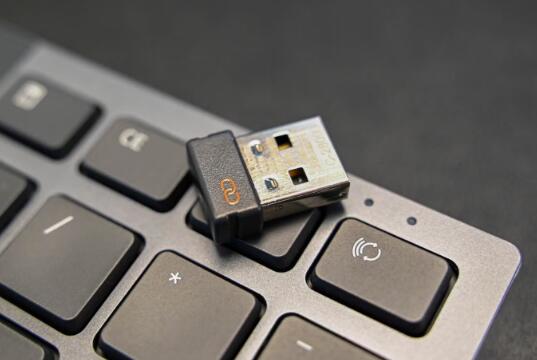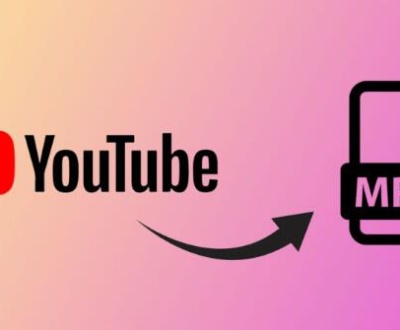Bluetooth connectivity is an essential feature for modern computing, providing wireless connections between devices such as headphones, speakers, keyboards, mice, and smartphones. However, at times, you may encounter issues where the Bluetooth USB device fails to start on a Lenovo computer, preventing you from utilizing Bluetooth functionality. The error may be accompanied by various symptoms, including a missing Bluetooth icon, inability to connect to Bluetooth devices, or a message such as “Bluetooth device not found” or “Bluetooth USB device won’t start.”
This comprehensive guide will walk you through understanding the problem, identifying potential causes, and providing step-by-step instructions to fix the “Lenovo no Bluetooth USB device won’t start” error. Whether you’re using Windows 10. Windows 11. or older versions of the operating system, the solutions in this guide will help resolve your Bluetooth connectivity issues.

The “Bluetooth USB device won’t start” error occurs when your Lenovo laptop or desktop fails to detect or properly initialize the Bluetooth adapter. In many cases, this problem is related to either a software conflict, outdated drivers, a malfunctioning Bluetooth USB dongle, or a hardware issue.
Bluetooth devices rely on software drivers to communicate with the operating system. If these drivers are outdated, corrupt, or incompatible with your version of Windows, it can lead to Bluetooth failures. Additionally, incorrect configurations in the device manager or conflicts with other connected devices may prevent the Bluetooth USB device from functioning correctly.
Causes of Bluetooth USB Device Issues
Several factors can contribute to the error where the Bluetooth USB device doesn’t start. Some of the most common causes include:
1. Outdated or Missing Drivers
Bluetooth drivers are critical for the proper functioning of your Bluetooth USB device. If the drivers are outdated, incompatible, or missing entirely, the system may fail to recognize the Bluetooth device.
2. Corrupted System Files
Corrupted system files can interfere with the installation and functioning of Bluetooth drivers, leading to the failure of Bluetooth services.
3. Hardware Conflicts
Conflicts with other USB devices or hardware components can cause the Bluetooth USB device to fail. This could be due to issues in the device manager, where conflicting devices are unable to work properly together.
4. Disabled Bluetooth in BIOS or UEFI
In some cases, Bluetooth may be disabled in the BIOS or UEFI settings of the Lenovo computer. This will prevent the operating system from detecting and using the Bluetooth hardware.
5. Bluetooth Services Not Running
Bluetooth services in Windows may not be running or could be misconfigured, preventing Bluetooth functionality from being initialized.
6. Windows Updates and Patches
Sometimes, a recent Windows update may cause compatibility issues with your Bluetooth USB device. In other cases, a missing update may also result in connectivity problems.
Step-by-Step Troubleshooting
Step 1: Check the Bluetooth USB Device in Device Manager
The first place to check when troubleshooting Bluetooth issues is the Device Manager. This tool provides a list of all the hardware components connected to your Lenovo computer.
Press Windows + X and select Device Manager.
Expand the Bluetooth section.
Look for your Bluetooth device in the list. It may be labeled as something like “Intel Bluetooth,” “Realtek Bluetooth,” or “Broadcom Bluetooth.”
If the device shows a yellow triangle with an exclamation mark, it indicates a problem. Right-click on the device and select Properties to see the error code or message.
If your Bluetooth device is listed under Universal Serial Bus controllers, it may indicate that it’s recognized as a USB device but isn’t functioning properly as a Bluetooth device.
Step 2: Update Bluetooth Drivers
Outdated or missing drivers are often the root cause of Bluetooth issues. To update your Bluetooth drivers:
Right-click on your Bluetooth device in Device Manager.
Select Update driver.
Choose Search automatically for updated driver software.
If Windows finds a new driver, it will automatically download and install it. Follow any on-screen instructions to complete the installation.
Restart your computer and check if Bluetooth starts working.
If Windows doesn’t find a new driver, you can visit Lenovo’s official support website to download the latest Bluetooth drivers specifically designed for your model. You can use the Lenovo Vantage app to check for updates, including Bluetooth driver updates.
Step 3: Uninstall and Reinstall Bluetooth Device
If updating the drivers doesn’t solve the problem, uninstalling and reinstalling the Bluetooth device can help reset its configuration.
In Device Manager, right-click your Bluetooth device and select Uninstall device.
Confirm the uninstallation and restart your computer.
Windows will attempt to automatically reinstall the Bluetooth driver upon restart. If not, manually reinstall the Bluetooth driver from Lenovo’s support website or using Lenovo Vantage.
Step 4: Run Windows Troubleshooter
Windows includes a built-in Bluetooth troubleshooter that can detect and fix common issues with Bluetooth devices.
Press Windows + I to open Settings.
Go to Update & Security > Troubleshoot.
Click on Additional troubleshooters.
Select Bluetooth and click Run the troubleshooter.
Follow the on-screen instructions to diagnose and fix the problem.
The troubleshooter will scan for issues with Bluetooth services, drivers, and other settings that could be preventing the device from starting.
Step 5: Check Bluetooth Services
If Bluetooth is not working, it’s possible that essential Bluetooth services are not running. To ensure that Bluetooth services are properly configured:
Press Windows + R to open the Run dialog.
Type services.msc and press Enter.
In the Services window, locate the following services:
Bluetooth Support Service
Bluetooth Handsfree Service
Bluetooth Audio Gateway Service
Right-click each of these services and select Properties.
Set the Startup type to Automatic.
If the service is not running, click Start to initialize it.
Click Apply and OK to save the changes.
Restart your computer and check if Bluetooth is now working.
Step 6: Check BIOS or UEFI Settings
Some Lenovo computers may have Bluetooth functionality disabled in the BIOS or UEFI. To check this:
Restart your Lenovo computer and press the appropriate key to enter the BIOS or UEFI (usually F1. F2. or Delete during startup).
Navigate to the Advanced or Integrated Peripherals tab.
Look for an option labeled Bluetooth, and ensure it is set to Enabled.
Save the changes and exit the BIOS/UEFI.
Restart your computer and check if Bluetooth is enabled.
Step 7: Perform a System Restore
If you recently installed software or a Windows update that may have caused the Bluetooth issue, performing a System Restore to a previous restore point can help.
Press Windows + S and type Create a restore point.
Click on System Properties and then go to the System Protection tab.
Click System Restore and follow the on-screen instructions.
Choose a restore point before the Bluetooth issue occurred.
Let the system restore process complete and restart your computer.
Step 8: Update Windows
Ensure your Lenovo computer is running the latest version of Windows, as updates often include fixes for Bluetooth issues.
Open Settings by pressing Windows + I.
Go to Update & Security > Windows Update.
Click Check for updates and install any available updates.
Restart your computer and check if Bluetooth is functioning properly.
Additional Tips
Try an External Bluetooth USB Adapter: If the built-in Bluetooth device is faulty or not recognized, you can use an external Bluetooth USB dongle as a temporary solution.
Reset Network Settings: Sometimes, resetting your network settings can help resolve Bluetooth-related issues. Go to Settings > Network & Internet > Status > Network reset.
Contact Lenovo Support: If none of the troubleshooting steps resolve the issue, consider reaching out to Lenovo support for professional assistance or to check if your Bluetooth hardware requires replacement.
About us and this blog
Panda Assistant is built on the latest data recovery algorithms, ensuring that no file is too damaged, too lost, or too corrupted to be recovered.
Request a free quote
We believe that data recovery shouldn’t be a daunting task. That’s why we’ve designed Panda Assistant to be as easy to use as it is powerful. With a few clicks, you can initiate a scan, preview recoverable files, and restore your data all within a matter of minutes.
Subscribe to our newsletter!
More from our blog
See all postsRecent Posts
- How to repair a broken usb port 2025-05-09
- How to repair my usb flash drive 2025-05-09
- How to search folder in file explorer 2025-05-09

 Try lt Free
Try lt Free Recovery success rate of up to
Recovery success rate of up to









